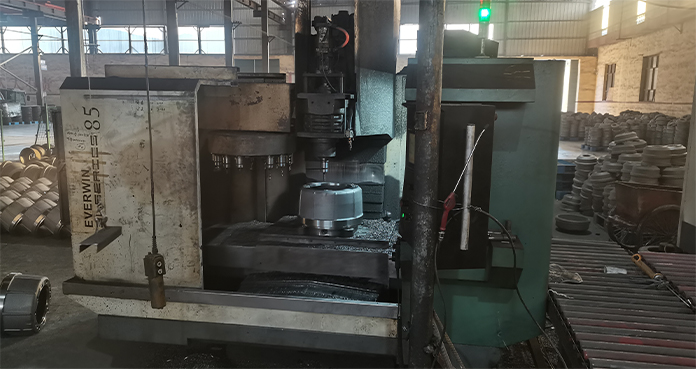Lis . 16, 2024 06:56 Back to list
how to remove frozen brake drum
How to Remove a Frozen Brake Drum
Dealing with frozen brake drums can be one of the most frustrating tasks for a DIY mechanic. Whether you're restoring an old classic car or simply maintaining your current vehicle, knowing how to remove a frozen brake drum is essential. In this article, we will walk you through a step-by-step guide on effectively removing a frozen brake drum, ensuring you can resolve the issue safely and efficiently.
Understanding the Problem
A brake drum can become frozen due to rust, corrosion, or simply due to moisture and dirt accumulation. This is particularly common in vehicles that have been sitting idle for an extended period, or in regions with harsh winter conditions. When the brake drum is frozen, it becomes almost impossible to rotate the wheel, making removal essential to any brake service or repair.
Tools You Will Need
Before you begin, gather the necessary tools
1. Jack and Jack Stands To lift the vehicle safely. 2. Lug Wrench To remove the lug nuts. 3. Brake Drum Puller A specialized tool designed to remove brake drums. 4. Hammer or Mallet For tapping the drum to release it. 5. Rust Penetrating Oil Such as WD-40 or PB Blaster. 6. Pry Bar to provide leverage if needed. 7. Safety Gear Including gloves and safety glasses.
Step-by-Step Guide
Step 1 Safety First
Ensure that the vehicle is parked on a flat surface. Engage the parking brake and place wheel chocks behind the wheels that are still on the ground. Always wear safety glasses and gloves to protect yourself from any debris.
Step 2 Lift the Vehicle
Using the jack, lift the vehicle and securely place it on jack stands. Never rely solely on the jack for support.
Step 3 Remove the Wheel
Using the lug wrench, loosen and remove the lug nuts from the wheel that is affixed to the frozen brake drum
. Carefully take off the wheel and set it aside.Step 4 Inspect the Drum
how to remove frozen brake drum

Before attempting to remove the drum, inspect it for any noticeable damage or debris. In many cases, dirt or rust can cause drums to become stuck.
Step 5 Apply Penetrating Oil
Spray a generous amount of rust penetrating oil around the hub where the drum meets the axle. Allow the oil to soak in for at least 15-30 minutes to help loosen any rust or corrosion that may be binding the brake drum.
Step 6 Use a Hammer or Mallet
With a hammer or mallet, gently tap on the outer edge of the brake drum. Start at one point and work your way around the circumference. This will help to break up any rust or corrosion. Be cautious not to hit too hard, as you could damage the drum.
Step 7 Use a Brake Drum Puller
If the drum remains stuck, a brake drum puller will be your next step. Position the puller arms around the brake drum, and tighten the central bolt gradually. This tool applies even pressure and should help pry the drum off. If you notice any resistance, stop and ensure that the puller is in the right position.
Step 8 Leverage with a Pry Bar
If the drum has still not budged, you can insert a pry bar between the drum and backing plate. Use leverage carefully to avoid damaging the components.
Step 9 Final Attempts
If all else fails, consider repeating the penetrating oil application and allowing it to soak longer. In extreme cases, if the drum is damaged or too corroded, you may need to seek professional assistance or consider replacing the drum altogether.
Step 10 Clean Up and Reassemble
Once you have successfully removed the brake drum, clean the area and check for any components needing replacement or repair. Always assess the condition of your brake shoes and other components while you have them accessible.
Conclusion
Removing a frozen brake drum may require patience and the correct tools, but following these steps should help you tackle the job effectively. Remember to prioritize safety throughout the process, and if you encounter difficulties beyond your capability, don’t hesitate to consult with a professional. Regular maintenance can prevent many of these issues, so be sure to check your brakes periodically. Happy wrenching!
-
Explore Japan: Ultimate Travel Guide & Authentic Experiences
NewsAug.19,2025
-
Your Brake Drum Man: Premium & Reliable Brake Drums for Sale
NewsAug.18,2025
-
ROR Web Development: Build Fast, Scalable, Secure Apps
NewsAug.17,2025
-
Scania Brake Drums: OEM Quality for Optimal Safety & Durability
NewsAug.16,2025
-
R.V.I: Advanced Remote Visual Inspection for Precision
NewsAug.15,2025
-
Discover HYUNDA: Innovative Vehicles, Equipment & Solutions
NewsAug.14,2025
